(NOT FINISHED) Chapter 15: The Special Senses
1/24
There's no tags or description
Looks like no tags are added yet.
Name | Mastery | Learn | Test | Matching | Spaced |
|---|
No study sessions yet.
25 Terms
olfactory neurons
15.1: Olfaction
olfactory receptor cells
found in the olfactory epithelium
bipolar
airborne molecules
15.1: Olfaction
what enters the nasal cavity and are gets dissolved in the fluid covering the olfactory epithelium?
papillae
15.2: Taste
projections on the surface of the tongue, often mistaken for taste buds
filiform papillae
15.2: Taste
a major type of papillae that is filament-shaped
has no taste buds
most numerous papillae
provide a rough surface on the tongue

vallate papillae
15.2: Taste
a major type of papillae that means “surrounded by a wall”
largest, but least numerous
8-12 of the form a V-shaped raw along the border between the anterior and posterior parts of the tongue
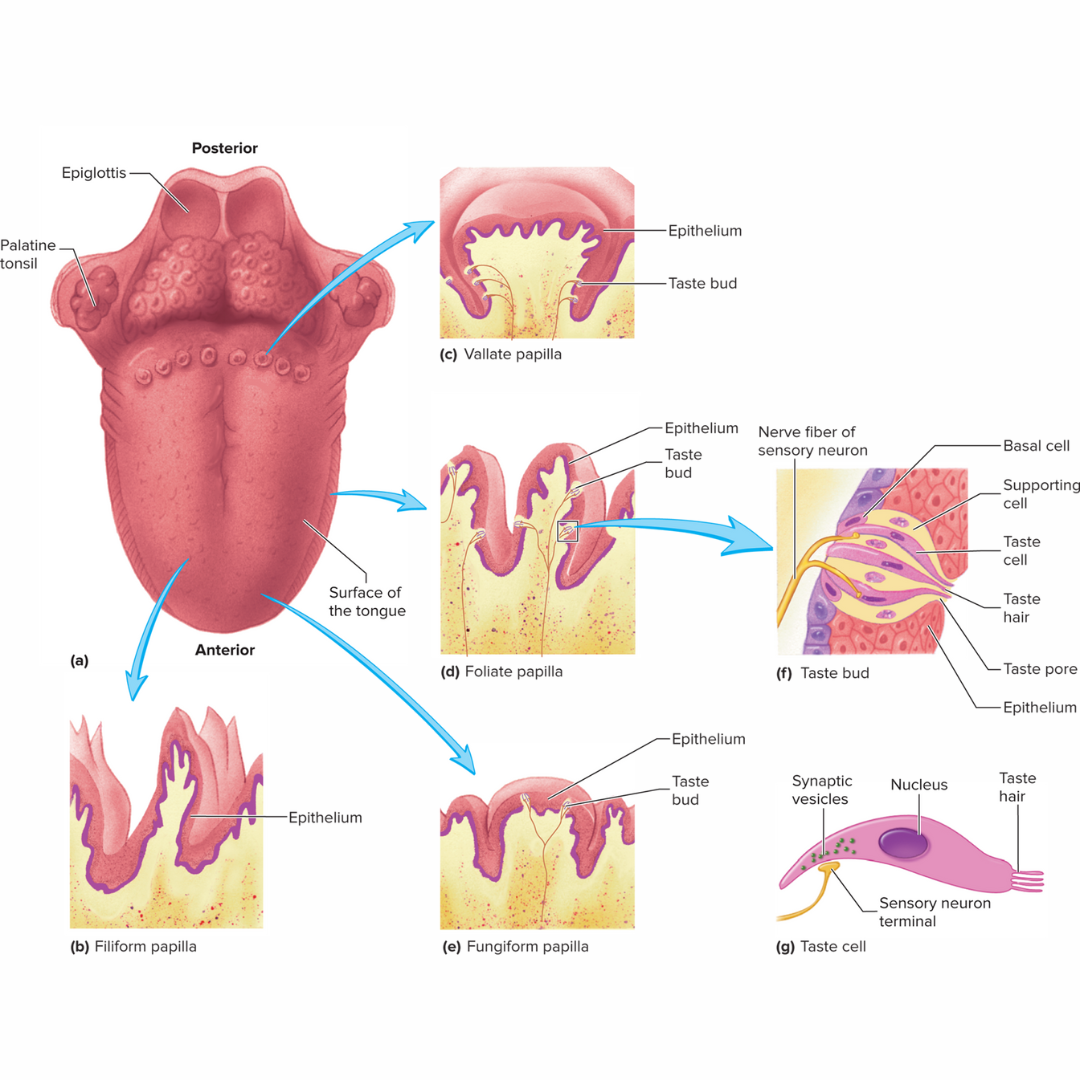
foliate
15.2: Taste
a major type of papillae that is leaf-shaped
distributed in folds on the sides of the tongue
contain the most sensitive taste buds
located posteriorly
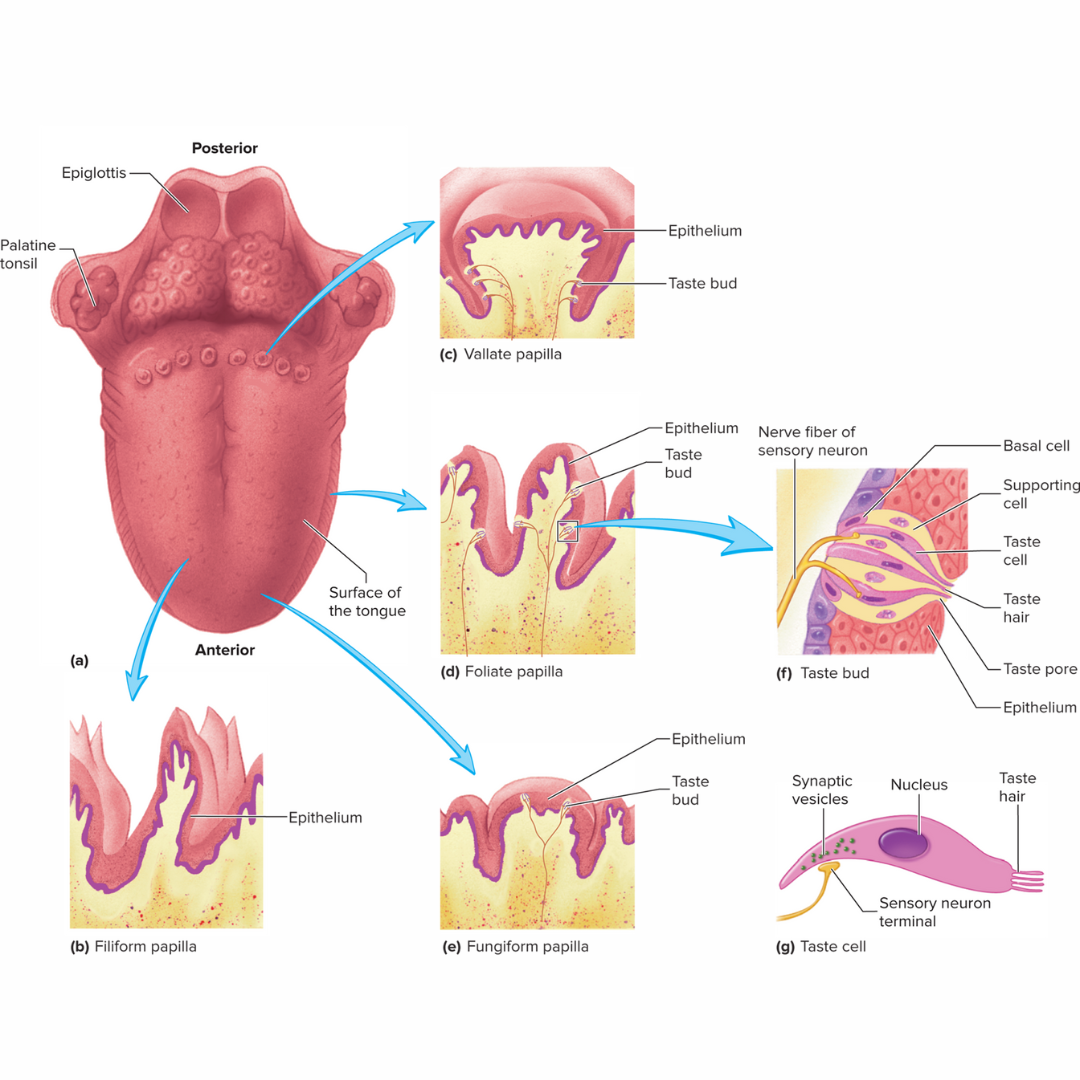
fungiform
15.2: Taste
a major type of papillae that is mushroom-shaped
scattered irregularly over the superior surface of the tongue
appear as small, red dots interspersed among the far more numerous filiform papillae
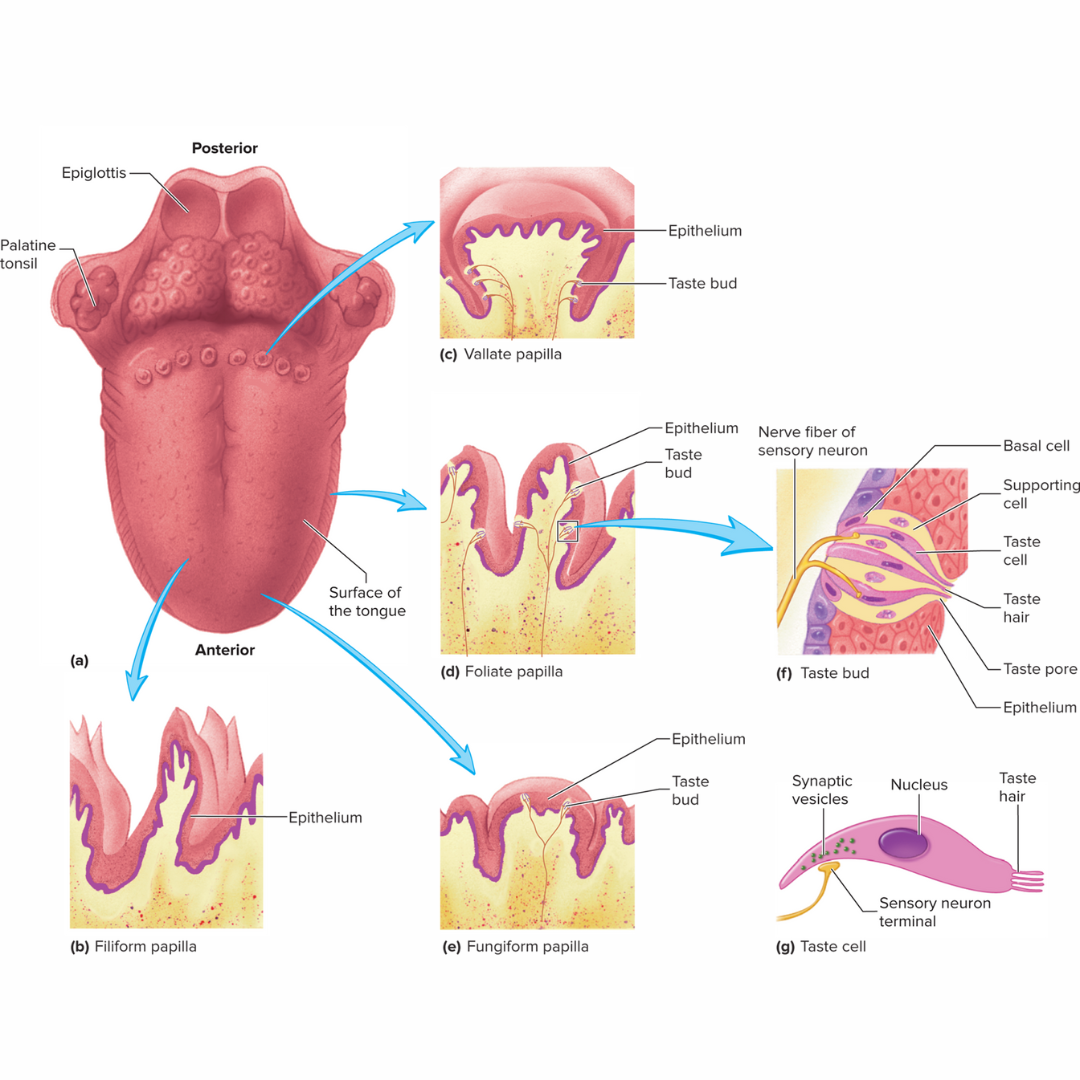
taste buds
15.2: Taste
oval structures embedded in the epithelium of the tongue and mouth
consist of basal cells, supporting cells, and taste cells
each one has about 50 taste cells
tastants
15.2: Taste
substances that, when dissolved in saliva, enter the taste pores and stimulate the taste cells
There are five major classes: salt, sour, sweet, bitter, and umami
eyebrows
15.3: Visual System: Accessory Structures
short hairs on the bony ridge above the eyes
prevent perspiration from running down the forehead and into the eyes
shades eyes from sunlight
eyelids
15.3: Visual System: Accessory Structures
The movable fold of skin in front of the eyeball
also called palpebrae
protects the eyes from foreign objects
eyelashes
15.3: Visual System: Accessory Structures
Hair at the margins of the eyelids
ciliary glands are modified sweat glands that open into the follicles to keep these lubricated
a sty forms when one of these glands is inflamed
conjunctiva
15.3: Visual System: Accessory Structures
a thin, transparent mucous membrane covering the anterior surface of the eyeball and lining the lids
when this is inflamed, caused by an infection or irritation, it’s called pink eye
lacrimal apparatus
15.3: Visual System: Accessory Structures
consists of a “tear” gland in the superolateral corner of the orbit of the eye and a duct system that extends from the eye to the nasal cavity.
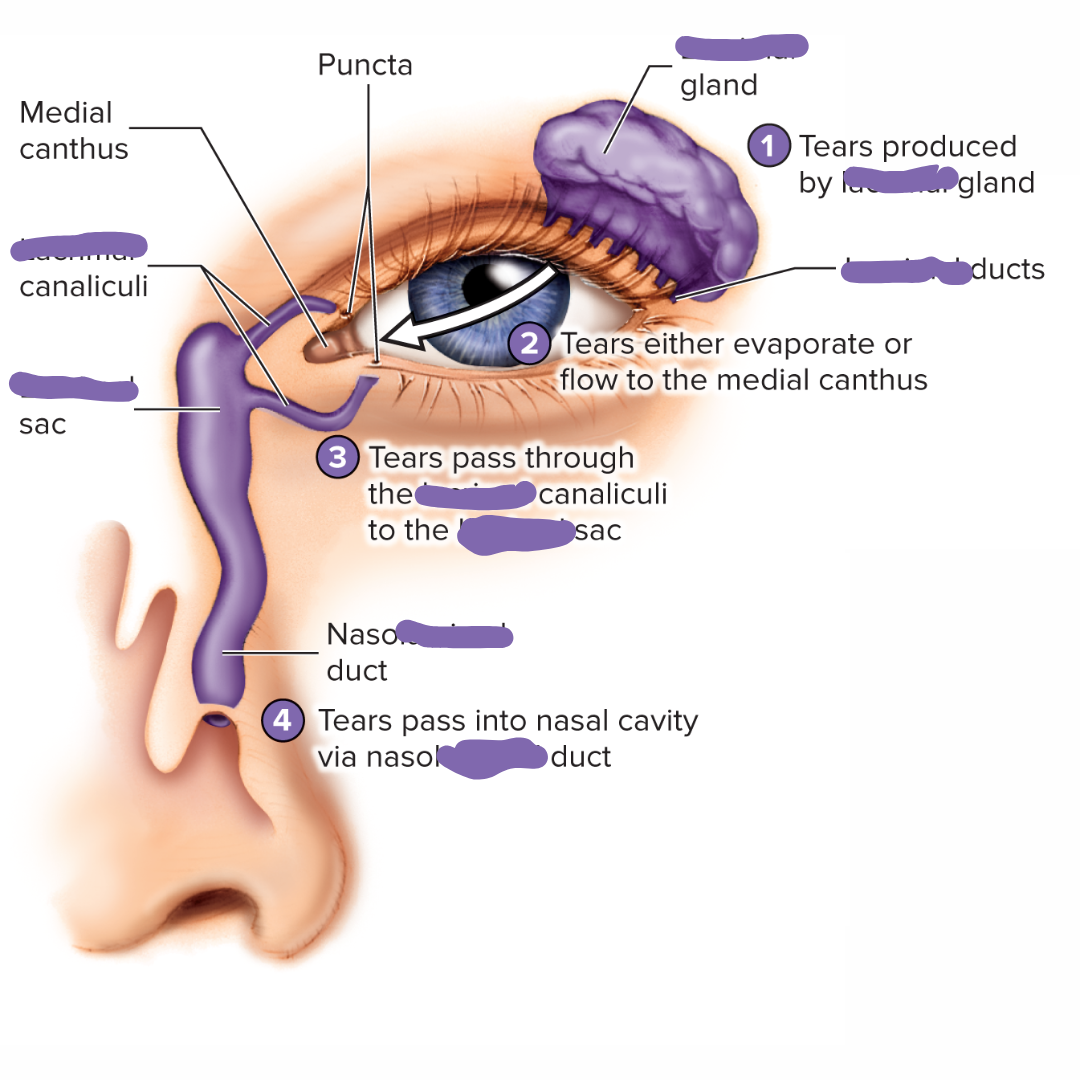
extrinsic eye muscles
15.3: Visual System: Accessory Structures
muscles located outside the structure (eye) being moved
the eye has six of these
four of these run more or less straight anteroposteriorly
two are positioned at an angle to the globe of the eye
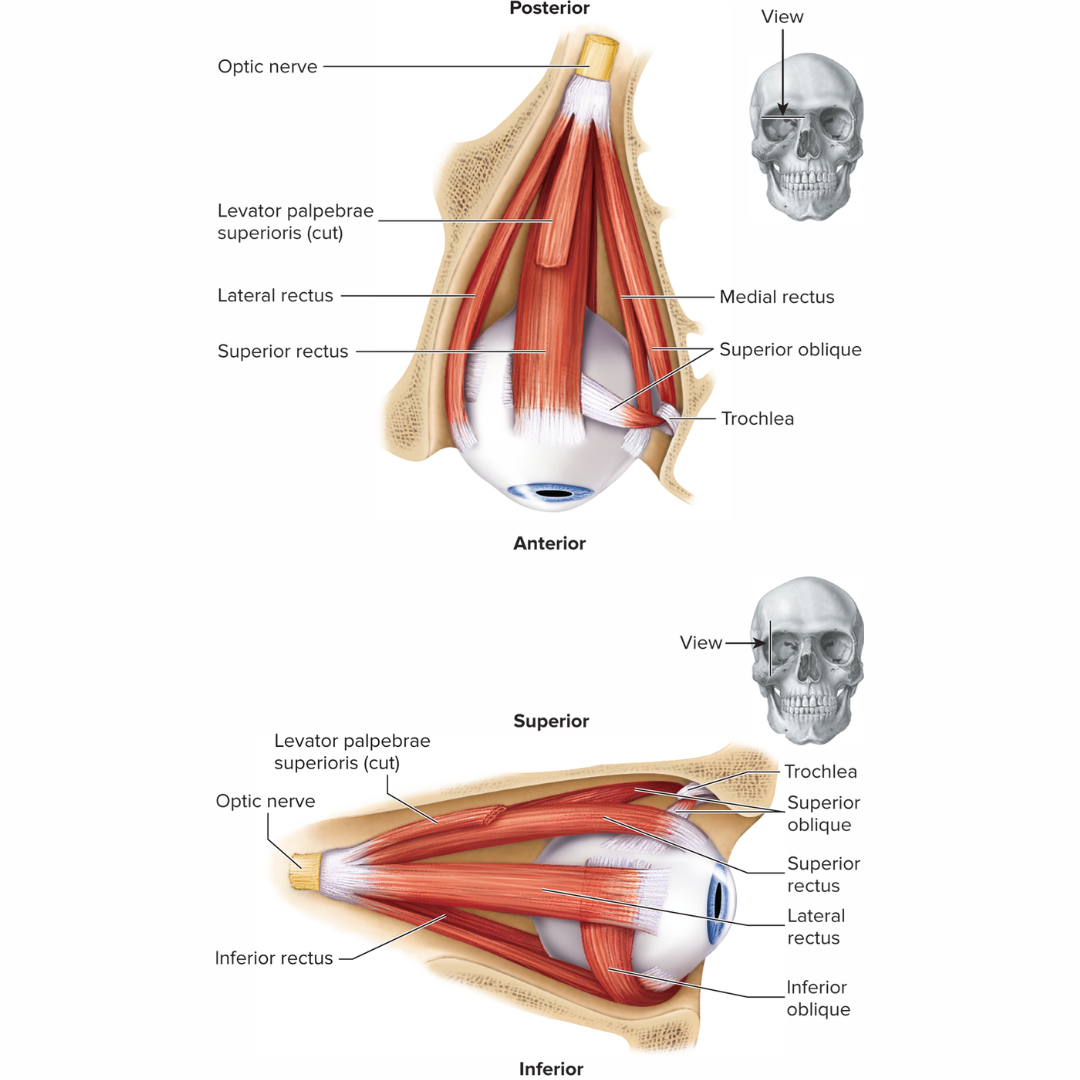
anterior chamber
15.3: Visual System: Anatomy
Chamber of the eye between the cornea and the iris
filled with aqueous humor
posterior chamber
15.3: Visual System: Anatomy
Chamber of the eye between the iris and the lens
filled with aqueous humor
vitreous chamber
15.3: Visual System: Anatomy
larger chamber of the eye
completely surrounded by the retina
filled with a transparent, jelly-like substance called [term part] humor
fibrous tunic
15.3: Visual System: Anatomy
outer layer of the eye
consists of the sclera and the cornea
sclera: a tough white outer layer that protects the eye
cornea: the transparent, anterior part of the eye that allows light to enter
firm, opaque tissue layer
vascular tunic
15.3: Visual System: Anatomy
middle layer of the eye
consists of the choroid, ciliary body, and iris
choroid: A vascular layer that nourishes the retina and contains blood vessels.
ciliary body: A ring-shaped structure that produces aqueous humor and contains the ciliary muscles that control lens shape
iris:The colored part of the eye that controls the amount of light entering the pupi
contains many blood vessels
nervous tunic
15.3: Visual System: Anatomy
the inner layer of the eye
consists of the retina
retina: The light-sensitive tissue at the back of the eye where images are formed.
retina
15.3: Visual System: Anatomy
the nervous tunic of the eyeball
consists of:
outer pigmented layer: composed of pigmented simple cuboidal epithelium
inner neural layer: responds to light with numerous photoreceptor cells (120 million rods and 6-7 million cones), and numerous relay neurons
covers the inner surface of the eyeball posterior to the ciliary body
rods
15.3: Visual System: Anatomy
photoreceptor in the retina of the eye
responsible for noncolor vision in low-intensity light.
cones
15.3: Visual System: Anatomy
photoreceptor in the retina of the eye
responsible for color vision
process of vision
15.3: Visual System: Functions
as light passes through the pupil of the iris, it is focused on the retina by the cornea, lens, and humors
the light striking the retina is converted into action potentials
the optic nerve conveys these action potentials to the brain
